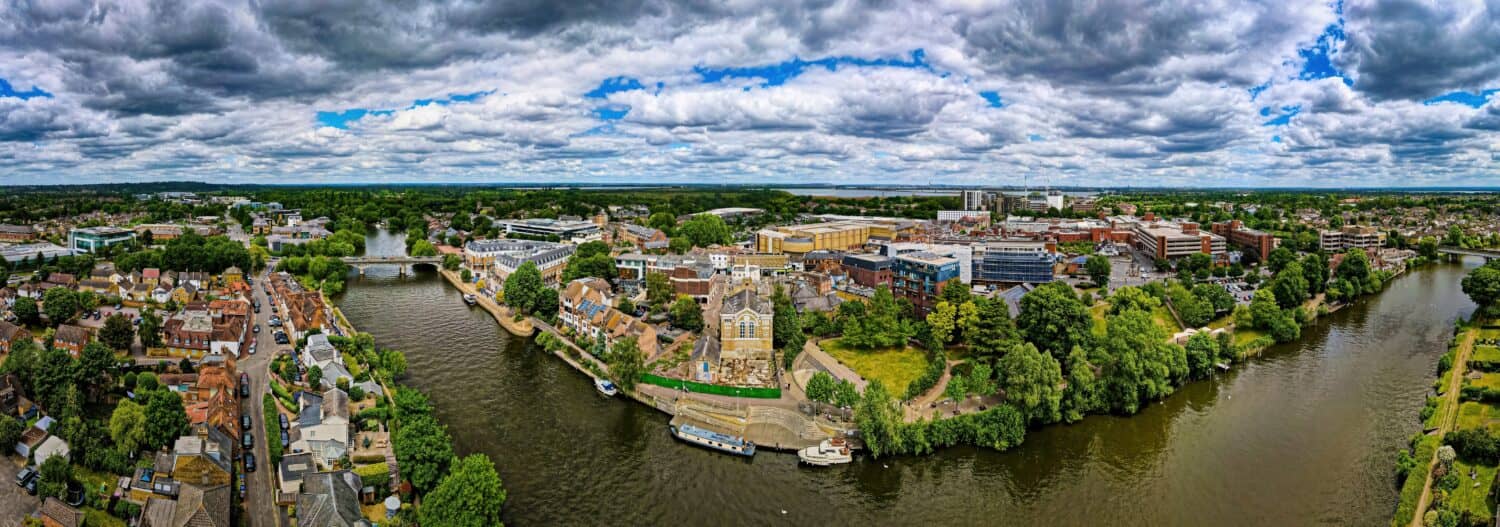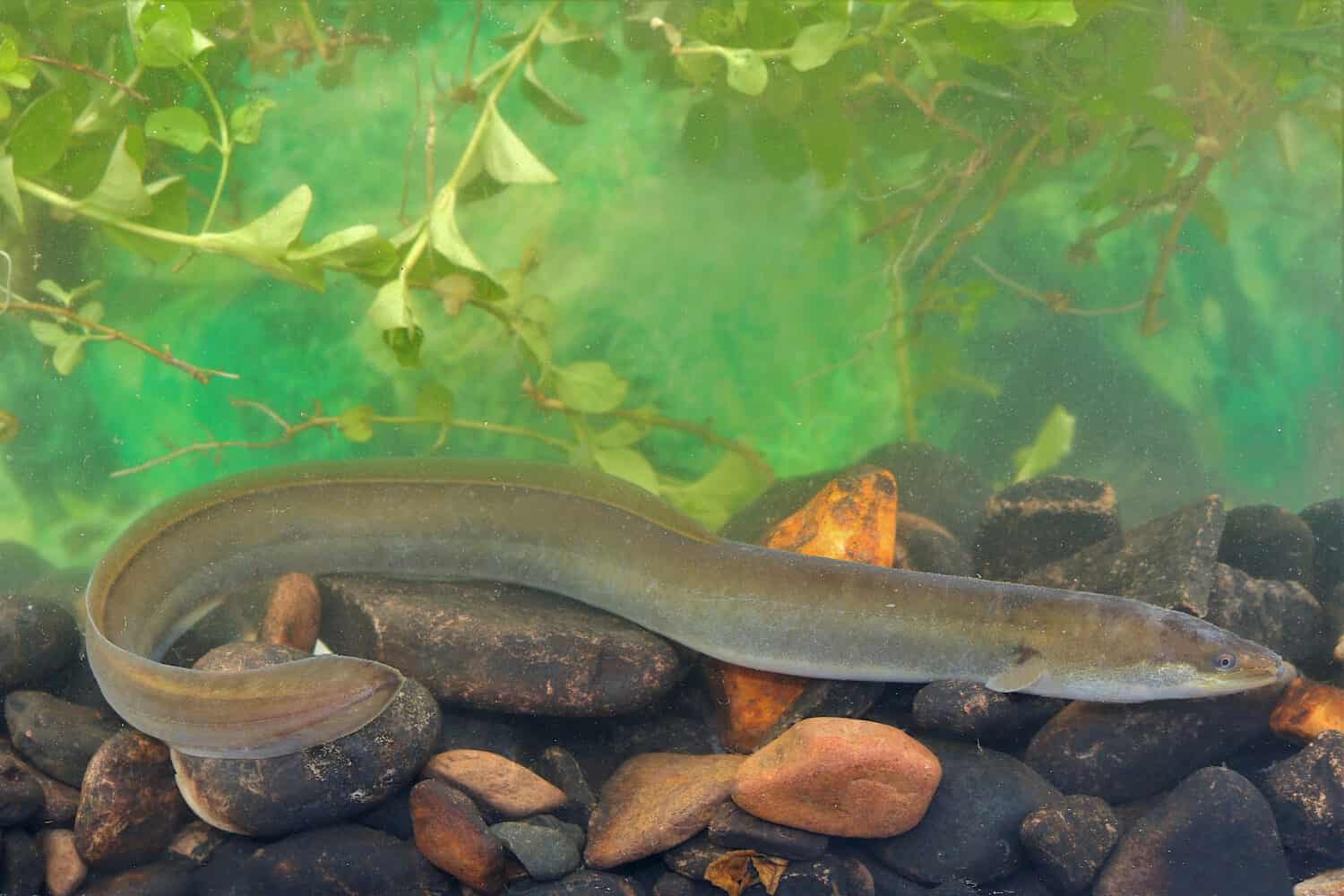Rivers traverse all along this island nation. England is known for a lot of things, but when it comes to rivers, there is one river that comes up in conversation constantly. The River Thames, as it is called in England, is perhaps the most famous and widest river in the country. Running through London, the Thames has a well-documented history.
The Thames River is important as it is a passageway to the North Sea, which the English used for important things, such as transporting cargo to innermost locations, as well as departing on voyages to seafaring places.
Today, the Thames River is still as important as ever. Discover the widest river in England, from where it’s located, its history, the wildlife that inhabits the river, and other fun facts about the Thames.
Thames River Location

There is a walking trail along the Thames River that spans 184 miles.
©GizemG/Shutterstock.com
The Thames River flows west to east, throughout southern England. It passes through the towns of cities of Oxford, Reading, London, and Southend-On-Sea. Besides being the widest river in England, it’s also the longest river in England at 215 miles. The Thames is the second-longest river in the United Kingdom.
Thames River Headwaters
The river starts at Thames Head, which is a group of seasonal springs in the Cotswolds area of England. Interestingly enough, there has been much dispute if Thames Head is the actual source of the Thames River. Some scientists have argued that the start of the Thames is in Gloucester, at Seven Springs. Although this debate has been going on for some time, the United Kingdom’s Environment Agency designates Thames Head as the official source of the river.
Thames River Course
The Thames River flows from Thames Head, in eastern England, all the way to the North Sea. It passes through several cities and towns along the way, including Oxford and Windsor. The most known part of the Thames is in the London area. The river borders such monuments as Westminster Abbey and the Houses of Parliament, as well as St. Paul’s Cathedral and the Tower of London. Among the historic and famous bridges over the Thames you’ll find the Tower Bridge and Millennium Bridge. At the end of the river is the Thames Estuary, which flows onto the North Sea.
Thames River Delta and Mouth
The Thames River is the widest in England, being 18 miles wide at its widest point. But the Thames River isn’t deep. Receiving about 27 inches of rain each year, the Thames is just 66 feet deep. At the mouth of the Thames River is the estuary, which meets up with the North Sea. The Thames Delta is a massive 65 miles. Thus, the Thames Estuary has been an important, economic link between England and the rest of Europe. Its shipping route has transported oil tankers, cargo ships, and ferries. There are also wind farms in the estuary, providing a whopping 82 megawatts of electricity. The Thames Estuary is also home to diverse wildlife in its surrounding areas, marine life, and natural habitats.
Thames River History

In Oxford, the Thames River is known as the River Isis.
©Alexey Fedorenko/Shutterstock.com
The Thames River has a rich history that has included being an economic waterway, a maritime passage for naval escapades, and the beginning of a water sport (rowing). During the height of Britain’s worldwide power, the Thames served as the economic center. However, it was in the late 1800s during the Victorian Era, that pollution in the river became a huge problem. Much of the marine life that inhabited the area died because of its toxicity. The pollution prompted the government to enhance its sewage system.
Although the river’s importance decreased after the UK’s power declined in the 20th century, there were several positive decisions. Conservation efforts by environmental groups ensured the river got cleaner and that marine life returned to areas where they had died off. Today, commercial fishing is mostly outlawed and the river only serves as a waterway for transport and tourism.
Wildlife Near the Widest River in England
There is a lot of wildlife and marine life in and near the Thames River, especially in the estuary. Unfortunately, because of pollution and climate change, there is constant worry from scientists that several species of animals, including oysters, seahorses, and 125 species of fish, will become endangered or even extinct as time passes by. Let’s take a look at a few animals that live in or near the Thames River.
European Eel

Among the aquatic life that live in the Thames, there are European eels, oysters, fish, sharks, seahorses, and a vast marine life.
©ABS Natural History/Shutterstock.com
The European eel, a species of snake-like fish, has historically been one of the most prominent species of marine life in the Thames River. Born in the Sargasso Sea in the North Atlantic Ocean, they migrate to Europe soon after. They settle in estuaries like the Thames River. Unfortunately, because of overfishing, flood barriers and dams, and habitat destruction by humans, European eels are critically endangered. There have been breeding projects in the Netherlands and Denmark to increase their population. Also, there have been conservation efforts to protect the natural habitats of these eels.
Harbor and Gray Seals
Both species of seals inhabit the area around the Greater Thames Estuary, usually on rocky areas and sandbanks. There are over 4,000 harbor and gray seals that live in the Thames Estuary. These funny animals eat fish and other marine life and are known to breed in the estuary.
Sharks
Lastly, we come to the marine animal you thought wouldn’t inhabit the River Thames. Alas, it’s true! Sharks call the estuary home and are known to roam around, hunting for food and using it as a breeding ground. Five species of sharks live in the estuary.
Fun Facts about the Thames and its Surroundings

The Thames started an English rowing tradition that continues to this day.
©Sven Hansche/Shutterstock.com
- Over 200 bridges go across the Thames River, including the famous Tower Bridge and Queen Elizabeth II Bridge.
- Back when there was no climatic change, you could skate on the river when it froze in winter.
- Oxford University and Cambridge University compete in boat races every year. Since the first race in 1829, Cambridge has won 84 times and Oxford 80 times.
- The Thames is nicknamed the Big Stink because back in 1858, the pollution and drainage that flowed into the river became so bad that the government created a more advanced sewer system.
- Many artists have painted or written about the Thames River. Such artists and authors include Claude Monet, J.M.W. Turner, Lewis Carroll, and Kenneth Grahame.
- Although known as murky, the Thames River is treated before getting distributed as drinking water to 66% of London’s population.
Final Thoughts
And there you have it, the Thames River is the widest in England, but also the longest river in England. It has been an important river, both historically and economically, for the English and the whole United Kingdom. The important waterway into London made sure the UK was one of the most powerful countries in history.
The Thames River is also an important body of water when it comes to its biodiversity. Many species of fish and marine life make the Thames their home and the river must be as clean as possible, to ensure a prosperous life. Although pollution hit the Thames River hard throughout its history, destroying much life in the river, conservation efforts have guaranteed that it is cleaner and more environmentally friendly. The widest river in England will continue to provide essential water for Londoners, as well as a home for the natural habitat that lives there.
The photo featured at the top of this post is © Csaba Peterdi/Shutterstock.com
Thank you for reading! Have some feedback for us? Contact the AZ Animals editorial team.







